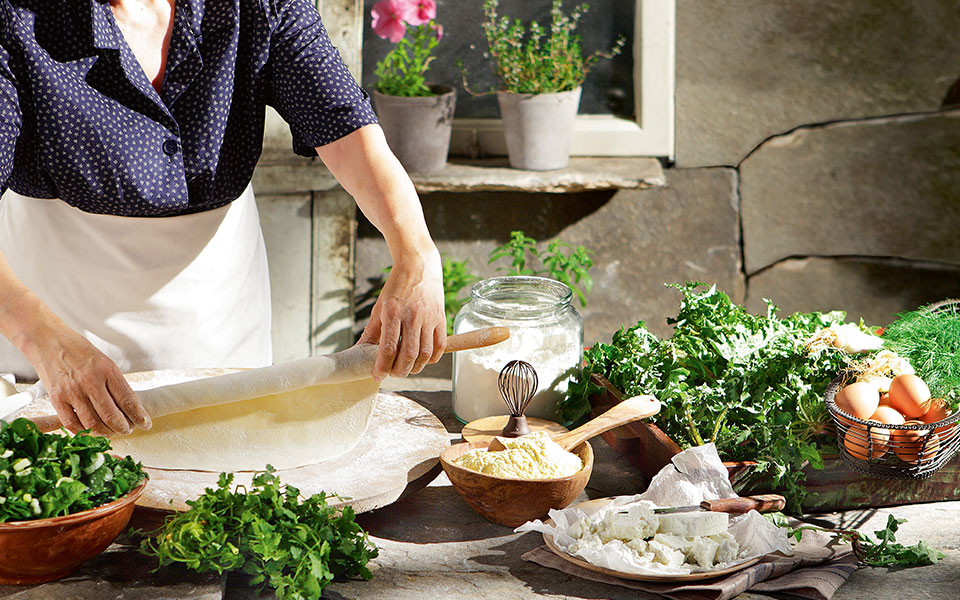For the most part, Epirus is composed of mountains, rivers and gorges. It’s dotted with scattered settlements and blanketed by snow in winter. Even though one side of Epirus is coastal – with the Ionian Sea lapping its long shoreline – the region has never sought to depend on summer seaside tourism; instead, it’s livestock farming that has always served as its “heavy” industry. Apart from those residing in Ioannina – the region’s cultured capital – most Epirotes have traditionally been stockbreeders. To this day, the area produces milk of exceptional quality, delicious meat and some wonderful cheese products from goat’s and sheep’s milk – the most famous of all being feta, our national cheese. The Epirote mountains are full of wild greens, nuts and other edible products – from chestnuts and mushrooms to fruits of the forest and grapes. Its vineyards are primarily concentrated in the Zagori and Metsovo areas.
In earlier times, the daily lives of the livestock farmers – which were characterized by demanding agricultural schedules and the lack of many basic necessities – forced them to become inventive in the way in which they fed themselves. Indigence and an obligatory self-reliance came together to mold their distinctive cuisine – a model of home economics, according to which everything is exploited to the fullest and nothing is tossed out. And it was through this spirit and approach that the Epirote pites (pies) came into being, as a creative way to multiply dishes and servings.
With a handful of trachanas (a fermented cracked wheat or flour product) or a little bit of home-produced cheese, they would make a pie that the entire family would eat. The way they use their various cheese products in these creations is also noteworthy; Epirotes have created dozens of different tyropites (cheese pies), recorded in old recipe books, using ingredients such as cheese that has been freshly curdled (chloro), as well as salty feta or hard goat cheeses. Hortopites (pies with greens) – which Epirotes also call lachanopites, are popular as well. They make lachanopites out of garden-grown greens, or whatever wild greens they collect along the route from their houses to the animal pens; these offer a traditonal taste experience and are high in nutritional value as well.
The area’s cuisine also features meat dishes, including numerous recipes using the entrails of goats and sheep prepared with greens. In addition, Epirotes favor game, river fish – which they grill, roast, or pan-fry in butter – as well as thick soups with rice and avgolemono (egg-lemon sauce). The use of sweet paprika is also characteristic and common; this ingredient is used both to make food more delicious and to add color to the plate, and serves as a substitute of sorts for tomato, which is scarce here. The most important element concerning Epirote cuisine, however, is how the locals have managed to keep it alive; its traditional dishes are still cooked at home and still served at food establishments, too, with all involved taking full advantage of local ingredients and following age-old – albeit often slightly updated – recipes.
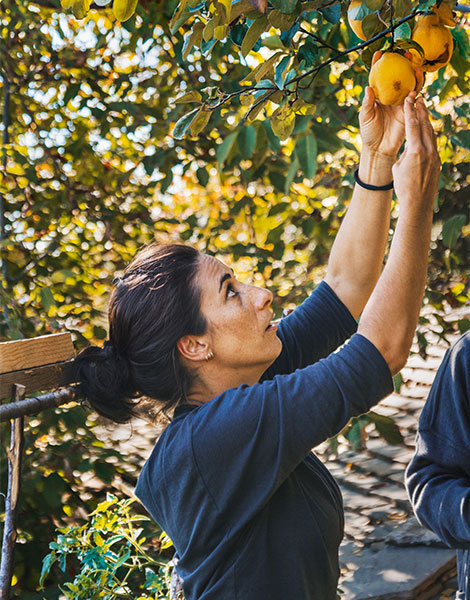
© Alexandros Antoniadis
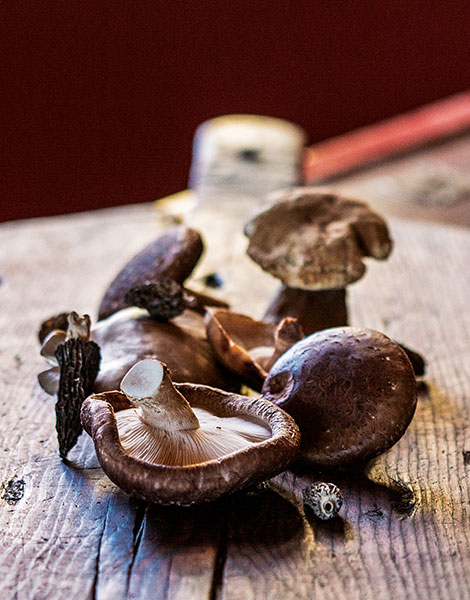
© Alexandros Antoniadis
CERTIFIED PRODUCTS
Dairy products are ever-present in the kitchens here; they include sheep’s yogurt, protected designation of origin (PDO) feta, hard and salty kefalotyri cheese, and PDO Metsovone – a smoked cheese made from a blend of goat’s, sheep’s and cow’s milk. It is produced in Metsovo using the same method employed to create Italy’s PDO Provolone Valpadana. Another cheese both typical of the area and very distinctive is galotyri (milk-cheese), which is salty, tangy and with a creamy consistency, and consumed with bread or as an accompaniment to pies.
Be sure to try some wild mushrooms from the Pindus National Park and from Zagori. If you find yourself near the Acheron or Louros rivers, ask for trout. The Arta eel is exceptionally tasty, a delicacy that’s exported to the rest of Europe. Epirus is famous for its tsipouro (pomace brandy), for the PDO wines of Zitsa and Metsovo, and for its handmade pasta. Epirote trachanas, made from milk and either flour or cracked wheat, is produced in small cottage industries or homes.
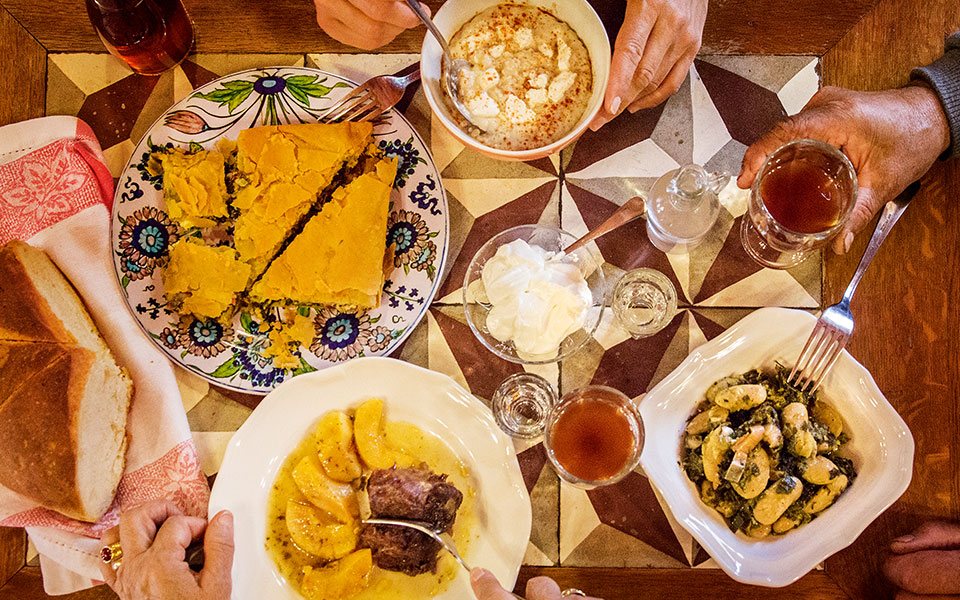
© Alexandros Antoniadis
signature dishes
There is no “universal” recipe for their most popular pie – alevropita or kasopita (bread pudding) – which is well-known throughout Greece. It is, in fact, made differently in every household.
The official measuring device in the area is the blohero or aplochero, that is, “the handful.” You can be initiated into the secrets of the Epirote pie – with its sweet or savory fillings and dozens of types of crusts – at one of Zagori’s traditional tavernas.
Trachanas with shredded feta makes a splendid soup, a comfort food for those chillier days. If you find yourself near Arta, head to the tavernas in Koronisia, with a view overlooking the Amvrakikos (Ambracian) Gulf, where you can sample local eel roasted on a ceramic tile with tomato and onion.
Ioannina is famous for its baklava, filled with walnuts and sweet spices.
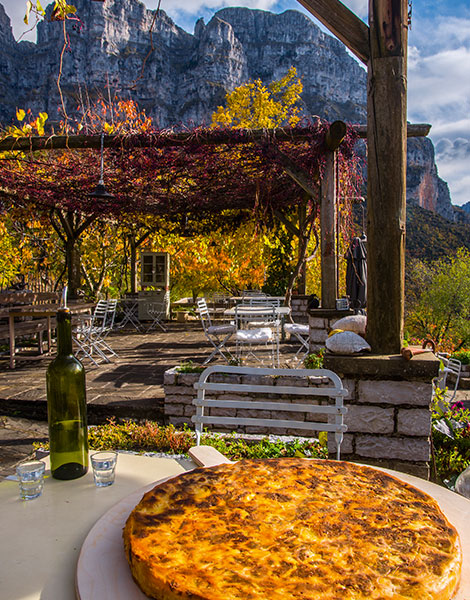
© Clairy Moustafellou
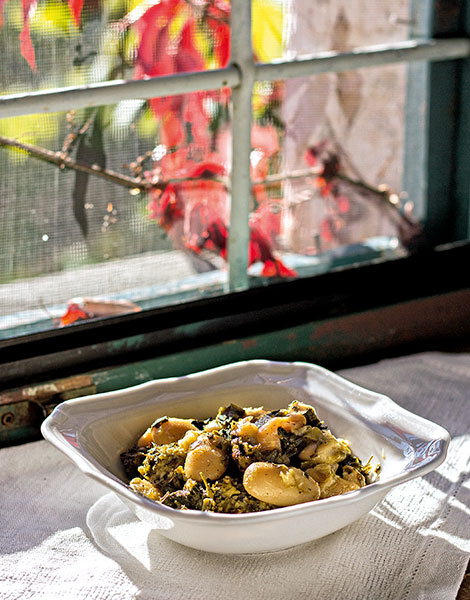
© Alexandros Antoniadis
WHERE TO EAT
If in Megalo Papigo, book a table at Astra (Tel. (+30) 26530.421.08) and enjoy local roasted/grilled meat, traditional pies and a special dish called skotobriamo, featuring rice, herbs, greens and liver.
Just outside Metsovo is the village of Anilio, home to a former traditional general store now called the Delfas taverna (Tel. (+30) 26560.414.74). There you can enjoy meat mezes such as kontosouvli (marinated and seasoned chunks of pork cooked on the rotisserie), local sheep on the spit and a variety of locally-produced Metsovian cheeses.
Situated in isolated Kapesovo – a village whose year-round population is only in the double digits – is a little guesthouse called Thoukididis (Tel. (+30) 697.998.3798). A restaurant operates there every Saturday and Sunday and on holidays, too. Here, you’ll find veal with wild mushrooms (which they gather themselves), pies, soups and beans baked in the oven with wild greens.
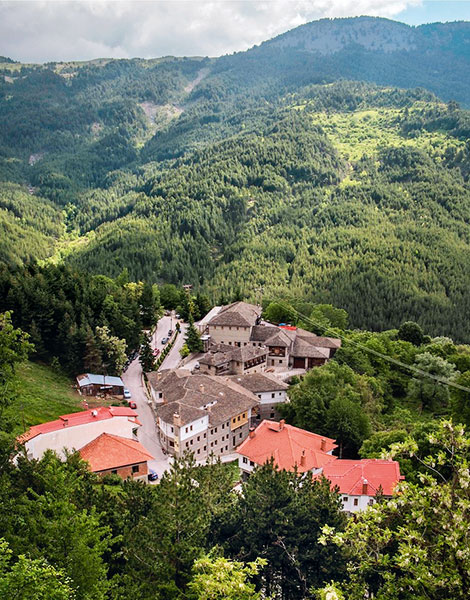
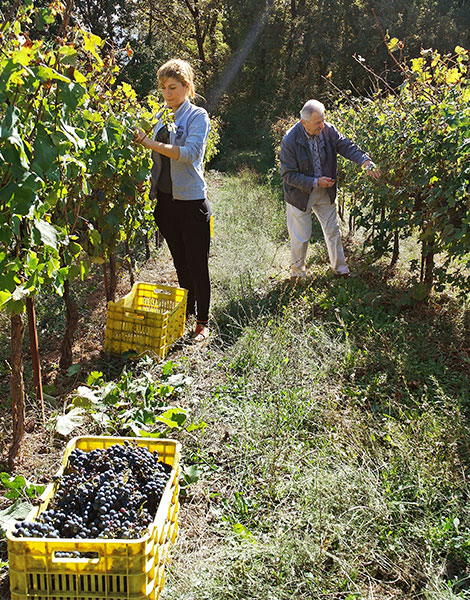
WINE: the first foreigner
by Yiannis Karakasis, MW
If the new global wine trends continue to favor indigenous varieties, freshness and elegance, then this remote and mountainous part of Greece, dominated by the Pindos mountain range and the cool climate that it brings, will definitely be a place to keep an eye on in the coming years.
Epirus has always been an insider’s secret; it is an underdog of a region where cool-climate viticulture has reached its apogee. Among its signature wines are stylish, elegant, low-alcohol reds and refreshing whites – still or sparkling, and sourced from steep high-elevation vineyards, often located 1000m or more above sea level.
The two most important wine areas in Epirus are Zitsa and Metsovo. Located northwest of the town of Ioannina, Zitsa has been graced with PDO status and produces the lemony Debina, a variety that yields subtle fresh sparkling wines which, together with those of Amyntaio, are the country’s most reliable bubblies. The still wines produced from the same variety are equally light-bodied, with bright acidity and delicate aromas of green apple, pear, lemon and white flowers. They are ideal as aperitifs or to complement salads and starters.
Metsovo, to the east of Ioannina, also has a well-established reputation for winemaking, thanks to the pioneering work of the Katogi Averoff winery and its founder, the statesman Evangelos Averoff-Tositsas. He was the first to introduce foreign grape varieties to Greece back in 1958, starting a vineyard with Cabernet Sauvignon in a rugged, inhospitable spot in the wild highlands that came to be called Yiniets, after the local dialect word for “vineyard.” This winery’s textbook-stylish medium-bodied Cabernet Sauvignon (with great ageability) is among the top examples of tits kind produced in Greece.
In the broader region, Cabernet Sauvignon is joined by two other red varieties, Bekari and Vlachiko, as well as aromatic white grapes (such as Traminer, Malagousia, Riesling and Sauvignon Blanc) that combine tension, lovely crispiness and minerality. One well-known native to the region, the brown bear, has developed a taste for all these varieties, devouring the lovely grapes as soon as they ripen and endangering annual production.

